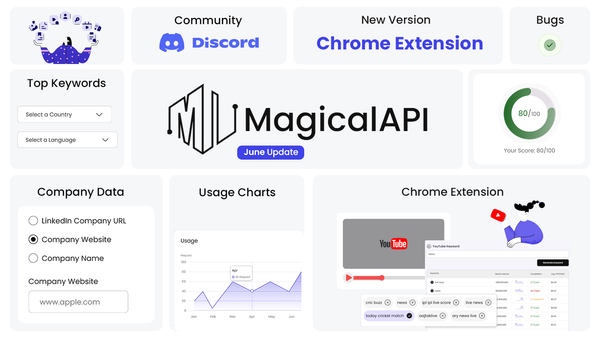Tags vs. Hashtags and Keywords for YouTube
YouTube Tags vs. Hashtags: Tags are not visible to your audience but are crucial in helping YouTube understand the content and context of your videos. Unlike tags, hashtags are visible to your viewers.
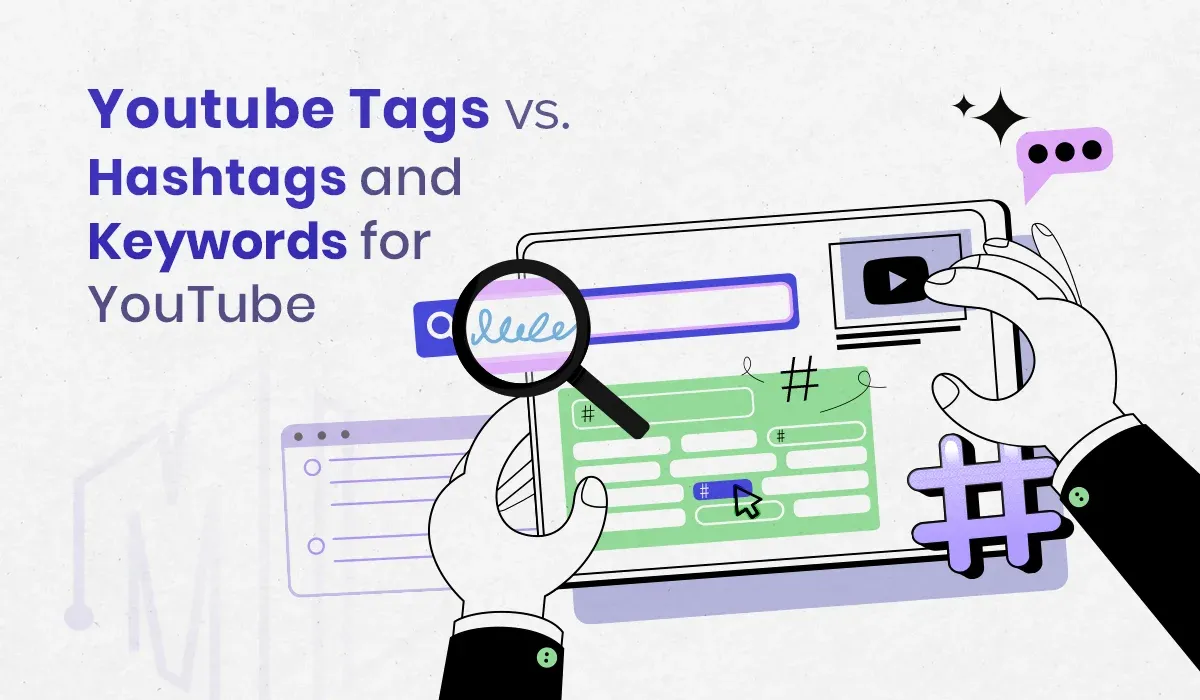
If you're looking to optimize your content on YouTube, you've likely heard about keywords, tags, and hashtags. But what are they, and how do you use them effectively? This guide will break down the definitions, uses, and strategies for each, ensuring your videos get the recognition they deserve.
✨ Unleash the Power of AI with MagicalAPI!
Whether you’re optimizing YouTube content, extracting LinkedIn data, or evaluating resumes, MagicalAPI is your one-stop solution! Discover the diverse range of AI services tailored to meet your every need. Dive in and elevate your digital experience today!

In the world of content creation, there are three terms that every creator needs to know: keywords, tags, and hashtags. These elements are crucial for organizing your content and making it discoverable to your intended audience. Let's take a closer look at each term.
YouTube Keywords
In the context of YouTube SEO, keywords are the specific words or phrases that viewers enter into YouTube's search bar when searching for videos.
These YouTube keywords help YouTube's algorithm understand the content of your videos and determine how they should be ranked and displayed in search results and recommendations.
YouTube keyword research involves finding words or phrases viewers use to search for videos. It helps tailor your content to match user searches, improving visibility and engagement. There are several keyword research tools that are essential for identifying popular and relevant keywords for your videos.
To optimize your keywords, consider the following tips:
- Use keywords that are relevant to your video's content and align with what your target audience is searching for.
- Place your keywords strategically within your content, such as in the title, or meta description, and use them as tags and hashtags.
- Avoid keyword stuffing, as this can lead to penalties.
- If “DIY home decor” is a trending search, consider titling your video something like “100 DIY HOME DECOR IDEAS .”
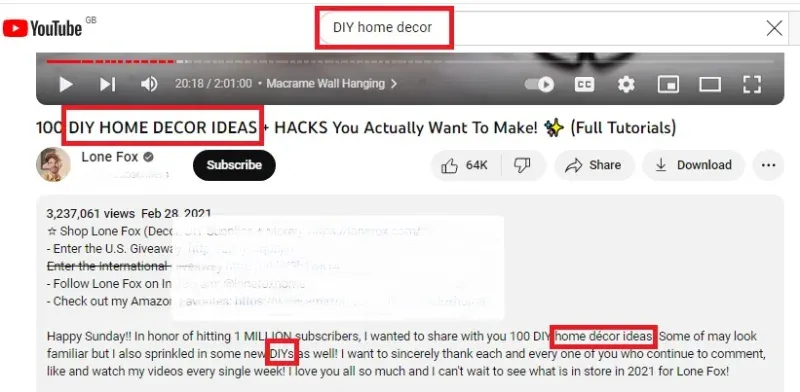
Differences Between Keywords and Tags
Both keywords and tags play a role in categorizing content. Keywords are integral to optimizing a video for YouTube's search algorithm, aiming to attract viewers by matching search queries.
Tags, on the other hand, are used within YouTube to categorize videos more specifically, aiding the platform in understanding video content and context, which helps in suggesting videos to users with similar interests.
YouTube Tags
A YouTube tag is a specific word or phrase added to a video, acting as a "label" that categorizes content and improves its discoverability on the platform.
- Tags are not visible to your audience but they help in connecting it with viewers searching for similar content.
- Think of tags as keywords that you add to your videos to categorize them for the YouTube search engine.
- For example, if a video is about a baking tutorial, the creator could tag their videos with phrases like "baking," "cookies," "recipes," and "chocolate chip." These tags will help YouTube associate the video with other similar content, potentially increasing its visibility to users interested in these topics.
Differences Between Tags and Hashtags
On YouTube, tags and hashtags both categorize content but in different ways.
Tags are behind-the-scenes labels that help YouTube's algorithm understand a video's content and context, improving its chances of being recommended to the right audience.
Hashtags, visible in the video description or title, offer a more interactive way for viewers to discover related content by clicking on them, leading to a feed of videos grouped under the same hashtag.
While tags work silently to optimize video discovery from within YouTube's system, hashtags provide a direct way for viewers to explore similar topics through a shared, clickable link.
YouTube Hashtags
Hashtags for youtube videos tailored to enhance video discoverability on YouTube.Unlike tags, hashtags are visible to your viewers. They appear above your video title or in the description and are clickable. Hashtags help categorize content and make it easier for viewers to find videos on particular topics.
When viewers click on a hashtag or search for it, they're led to a page that aggregates all videos tagged with that specific hashtag, facilitating a thematic search and content exploration.
This feature allows creators to connect their videos with broader topics, trends, or themes, increasing the likelihood of discovery by interested audiences.
YouTube's use of hashtags adds an additional layer to video SEO strategies, enabling creators to tap into current discussions, align with viewer interests, and boost their content's visibility within the platform's vast video library.

Strategies for YouTube Hashtags:
- Select Relevant and Specific Hashtags
- Avoid Hashtag Overload
- Incorporate Trending Hashtags
- Balance Between Broad and Niche Hashtags
Differences Between Keywords and Hashtags
On YouTube, keywords optimize video searchability by matching viewer searches, affecting rankings and recommendations.
Hashtags, marked by a hash sign (#), categorize videos for easy exploration of related topics, offering a user-centric discovery method.
While keywords enhance SEO behind the scenes, hashtags create clickable links for direct viewer engagement with themed content.
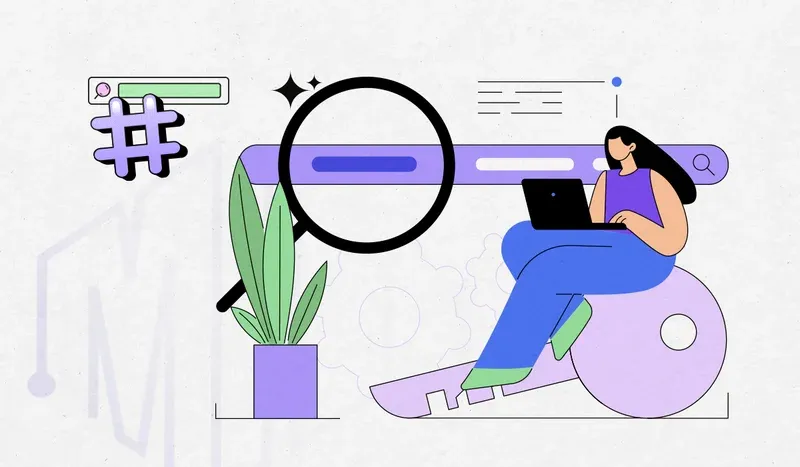
Synergizing Tags, Hashtags, and Keywords
The trick to maximizing your YouTube presence is to skillfully blend YouTube keywords vs tags vs hashtags. Use tags to categorize your video for the algorithm, hashtags to connect with broader conversations, and keywords to ensure your video is found in searches.
- Consistency is Key: Your tags, hashtags, and keywords should complement each other and accurately represent your video’s content.
- Stay Dynamic: YouTube is constantly evolving. Regularly assess the effectiveness of your tags, hashtags, and keywords, and be ready to adjust them as trends shift.
Read more: How to Get 1000 Subscribers on YouTube Fast?
How to Add Tags to YouTube Videos?
Adding Tags While Uploading a New Video:
1-Start Uploading: Click on the camera icon at the top right corner of YouTube and .

2-Video Details: While filling out the details for your video, scroll down to find the 'Tags' section.
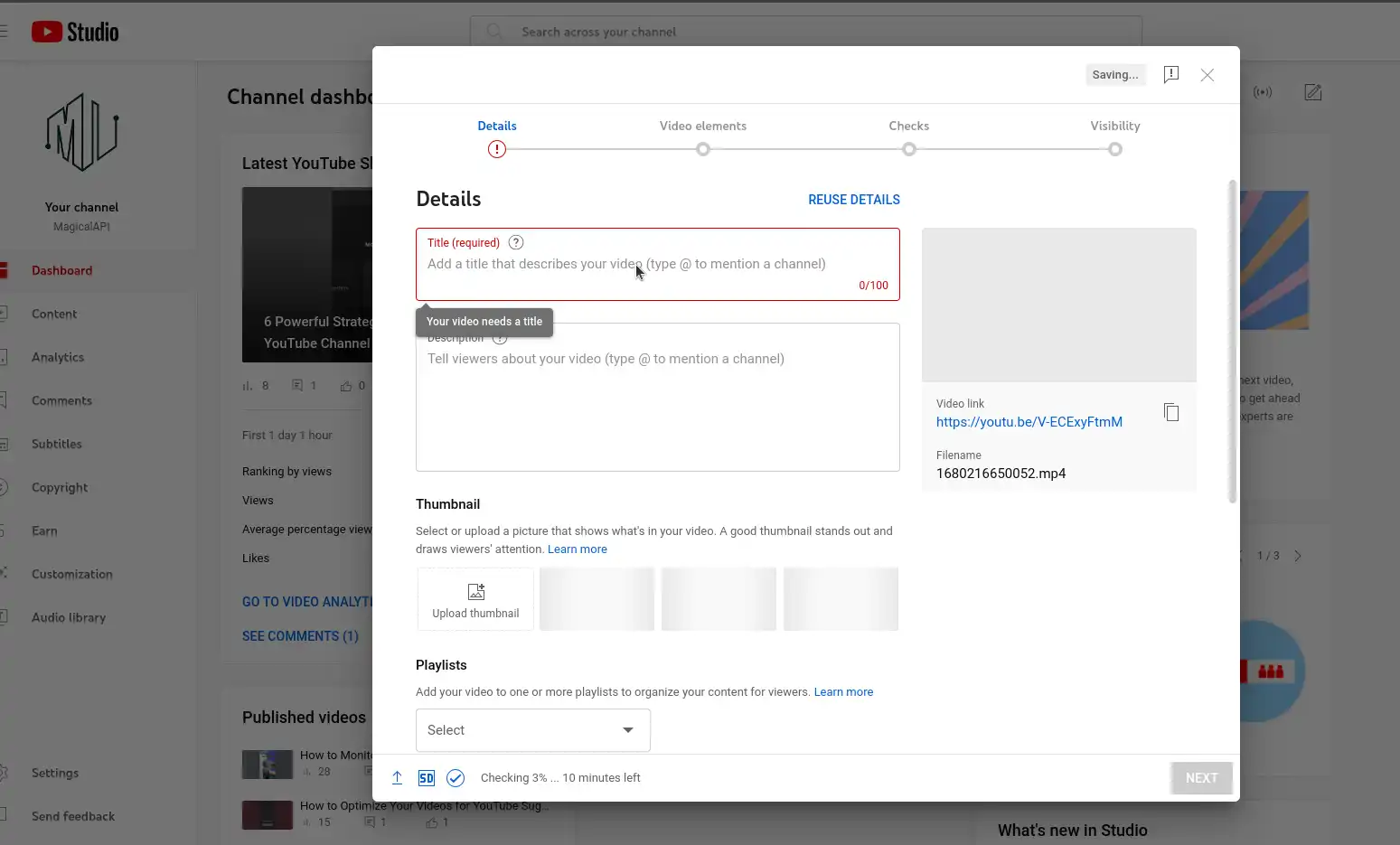
3-Enter Tags: Type your tags in the provided field. Separate each tag with a comma.
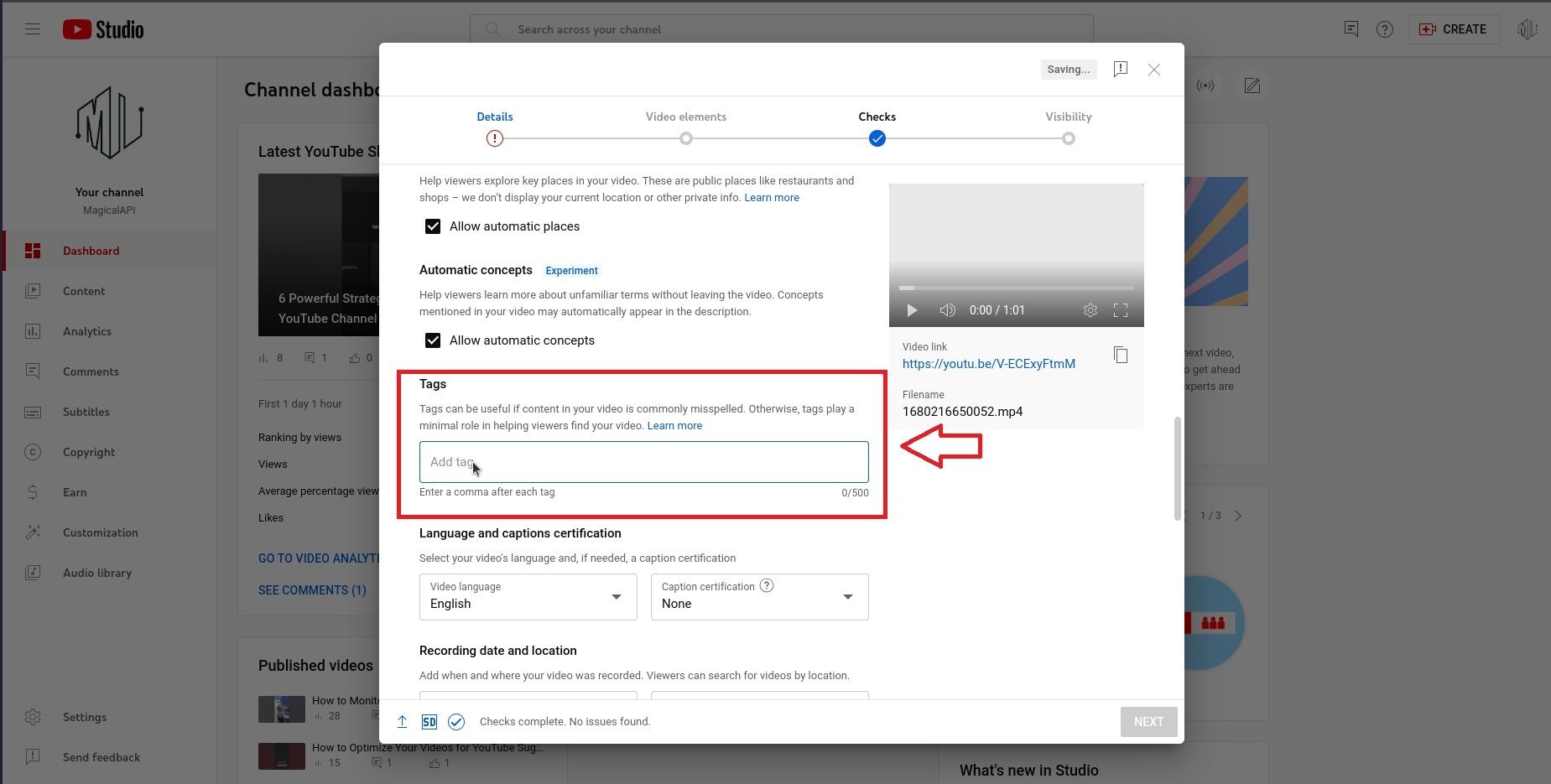
4-Save Changes: Once you’ve added all relevant tags, finish the upload process as usual.

Tips for Tagging
- Relevance: Choose tags relevant to your video's content.
- Variety: Use a mix of broad and specific tags.
- Character Limit: Remember, you have a 500-character limit for tags.
Are Keywords Better Than Hashtags?
Keywords are pivotal for search engine optimization and play a significant role in how YouTube's algorithm ranks and suggests videos. Hashtags, on the other hand, are more beneficial for categorizing videos and linking them to broader topics, but they don't impact search rankings as much as keywords do.
YouTube Hashtags or Keywords Generator
To effectively generate YouTube hashtags and keywords, there are several tools designed to help you find the most suitable terms for your content. One such notable addition is the YouTube Keywords Tool. This comprehensive and user-friendly platform stands out for its ability to analyze current trends and offer suggestions specifically tailored to boost your video's visibility and engagement on YouTube. Particularly beneficial for those looking to optimize their content strategy, this tool provides data-driven keyword insights that are essential for maximizing online presence.
Conclusion
The strategic use of YouTube keywords, tags, and hashtags is essential for optimizing your videos for better reach and engagement. While tags work silently in the background to enhance search relevancy, hashtags visibly connect your content to current trends and communities.
Keywords, however, remain the most impactful in terms of search engine optimization and influencing YouTube's algorithm. Tools like YouTube Keywords are invaluable for finding the most effective keywords, and providing tailored suggestions to significantly boost your video's visibility and engagement.
Balancing these elements effectively ensures your content resonates with your intended audience and thrives in the dynamic environment of YouTube.
FAQ
- How do YouTube hashtags differ from tags?
Hashtags are added to a video's description and appear as clickable links above the video title. They help users discover related content by grouping videos under the same hashtag. While tags work behind the scenes to aid the algorithm, hashtags provide a direct way for viewers to explore related videos by clicking on them. - How can combining tags, hashtags, and keywords improve my video's performance?
Combining tags, hashtags, and keywords enhances your video's discoverability and SEO. Tags categorize your video for YouTube’s algorithm, hashtags connect your content with broader topics and trends, and keywords optimize your video for search queries.

Join to our community
By joining our Discord server, get assistance, and troubleshoot any challenges you may encounter while using our services.
Join us on Discord

